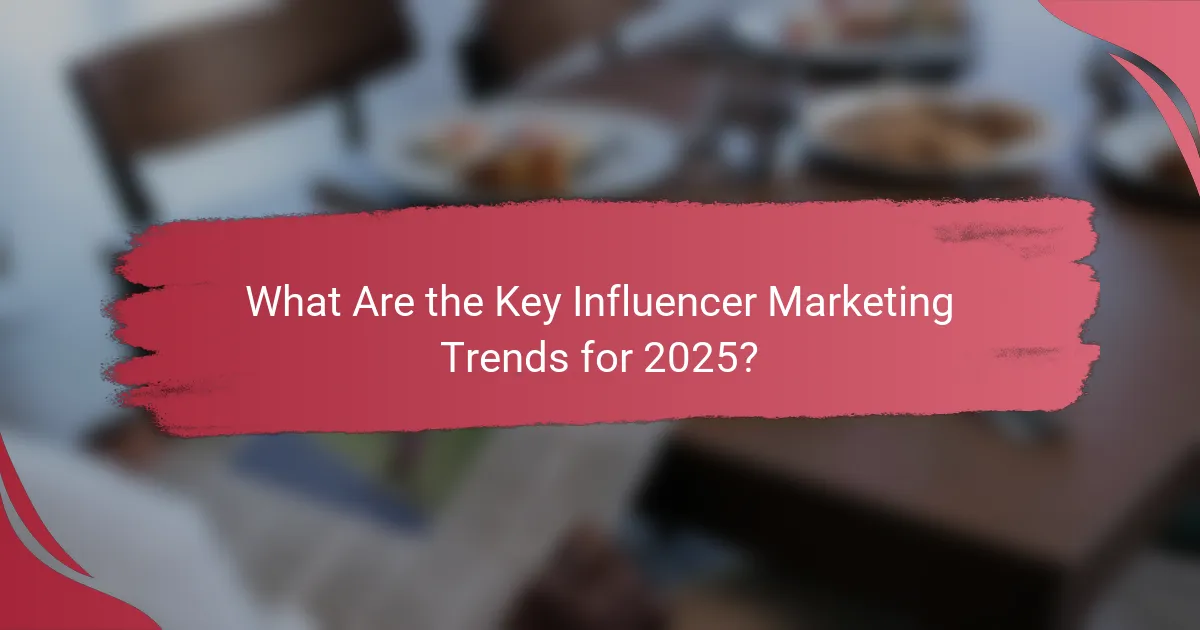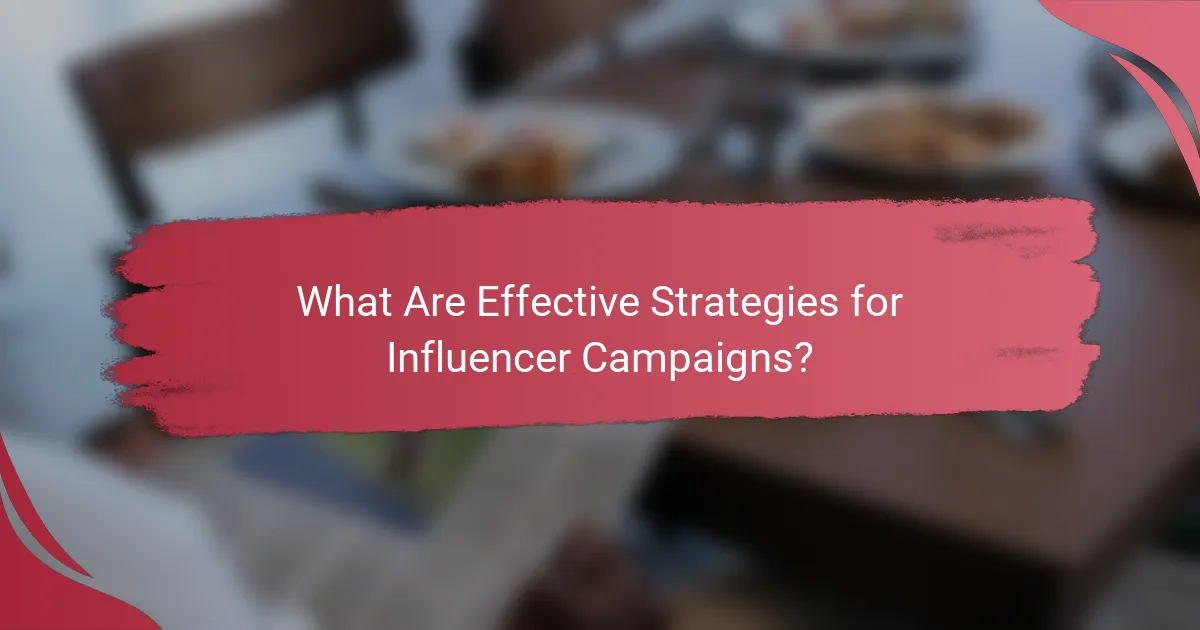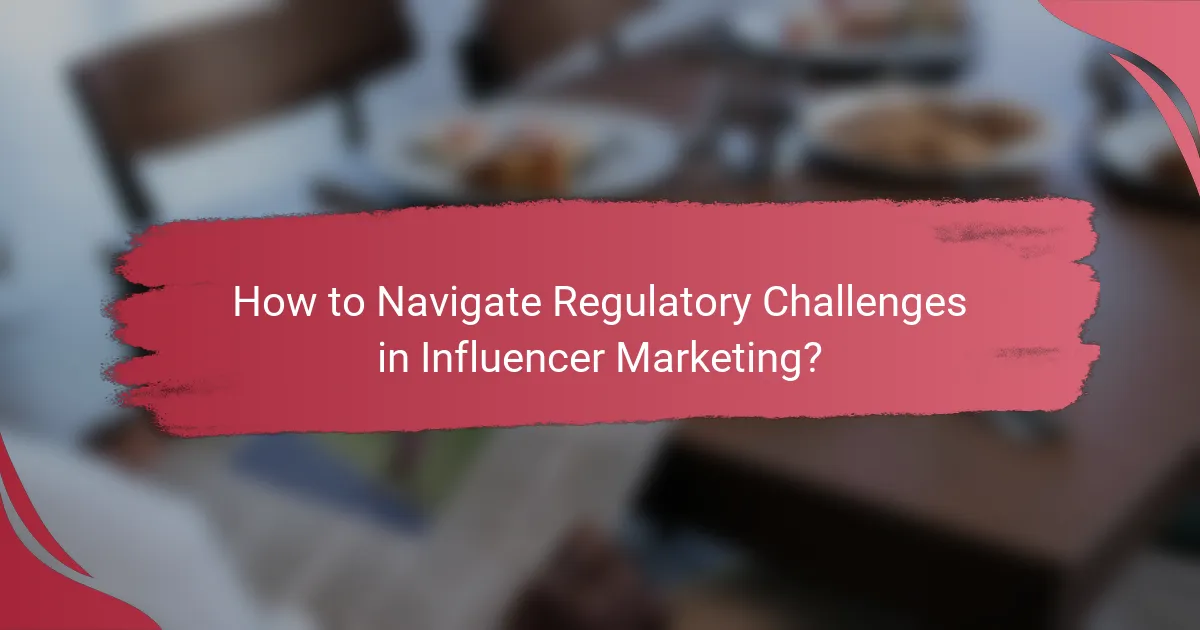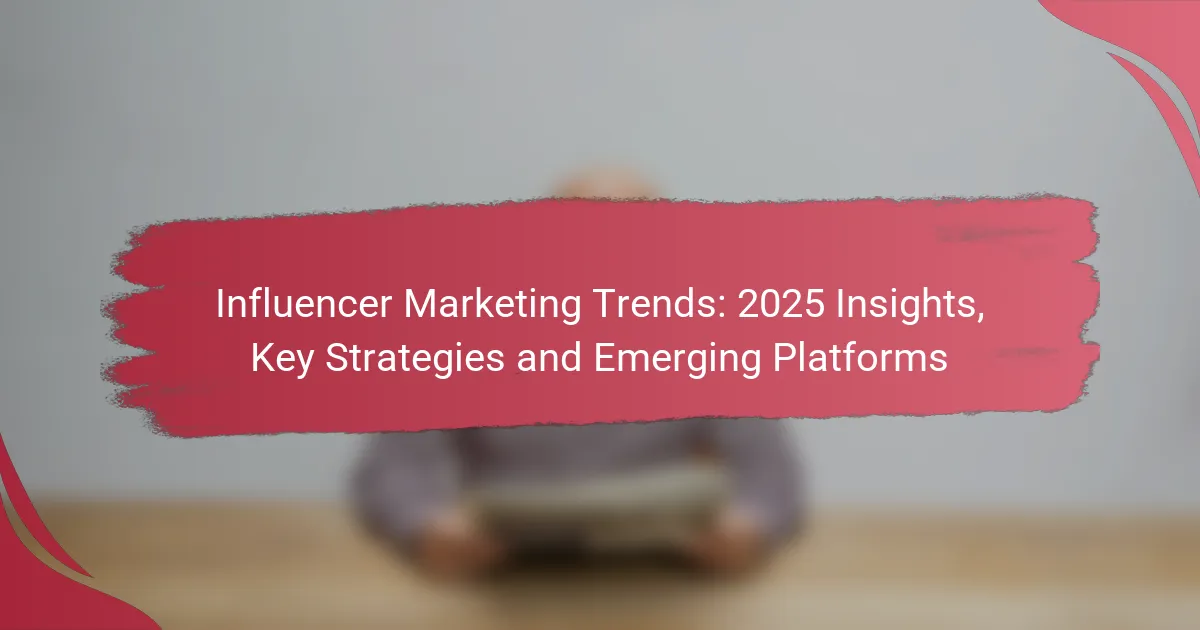As we look ahead to 2025, influencer marketing is set to evolve significantly, with key trends highlighting the rise of micro-influencers, the prevalence of video content, and the integration of AI in influencer selection. Brands must adapt to these changes by carefully choosing influencers who align with their values and resonate with their target audience. By leveraging data-driven strategies and fostering long-term relationships, companies can enhance engagement and achieve greater returns on their marketing investments.

What Are the Key Influencer Marketing Trends for 2025?
Key influencer marketing trends for 2025 include a shift towards micro-influencers, the dominance of video content platforms, and the integration of AI in selecting influencers. These trends reflect changing consumer preferences and technological advancements that brands must leverage for effective marketing strategies.
Increased focus on micro-influencers
Micro-influencers, typically defined as those with 1,000 to 100,000 followers, are gaining traction due to their higher engagement rates and niche audiences. Brands are recognizing that these influencers often foster more authentic connections with their followers, leading to better conversion rates.
To effectively utilize micro-influencers, brands should identify those whose values align with their own and engage them in meaningful partnerships. This can involve product collaborations, sponsored content, or even co-hosting events to enhance visibility.
Rise of video content platforms
Video content platforms, such as TikTok and YouTube, are becoming essential for influencer marketing strategies. With consumers increasingly favoring video over static content, brands must adapt by creating engaging video campaigns that resonate with their target audience.
When planning video content, brands should focus on storytelling and authenticity. Short, impactful videos that showcase products in real-life scenarios can drive higher engagement and shareability. Consider collaborating with influencers who excel in video production to maximize reach.
Integration of AI in influencer selection
The integration of AI technology in influencer selection is transforming how brands identify and engage with influencers. AI tools can analyze data on audience demographics, engagement rates, and content performance to help brands make informed decisions.
To effectively implement AI in influencer marketing, brands should invest in platforms that offer robust analytics and insights. This allows for a more strategic approach to influencer partnerships, ensuring that the selected influencers align with campaign goals and target demographics.

How to Choose the Right Influencers?
Choosing the right influencers involves evaluating their audience, engagement, and alignment with your brand values. This process ensures that your marketing efforts resonate with the intended demographic and reflect your brand’s identity.
Evaluate audience engagement rates
Engagement rates are crucial indicators of how well an influencer connects with their audience. Look for influencers with engagement rates typically ranging from 1% to 5% for most platforms, as this suggests an active and interested follower base.
To assess engagement, consider metrics such as likes, comments, shares, and overall interaction on posts. Tools like Hootsuite or BuzzSumo can help analyze these metrics effectively.
Assess brand alignment and values
Brand alignment refers to how well an influencer’s image and values match your own brand’s ethos. Choosing influencers who share similar values can enhance authenticity and trust with your audience.
Review the influencer’s past content and collaborations to ensure they resonate with your brand’s message. For example, if your brand focuses on sustainability, partnering with influencers who advocate for eco-friendly practices is essential.

What Are Effective Strategies for Influencer Campaigns?
Effective strategies for influencer campaigns focus on leveraging data, fostering long-term relationships, and utilizing multiple platforms. By implementing these approaches, brands can enhance engagement and maximize their return on investment.
Utilize data-driven insights
Data-driven insights are crucial for optimizing influencer campaigns. Brands should analyze metrics such as engagement rates, audience demographics, and conversion statistics to identify the most effective influencers for their target market.
Consider using tools like Google Analytics or social media insights to track performance. This information can guide decisions on which influencers to collaborate with and how to tailor content for better results.
Leverage cross-platform promotions
Cross-platform promotions allow brands to reach wider audiences by utilizing multiple social media channels. Collaborating with influencers across platforms like Instagram, TikTok, and YouTube can enhance visibility and engagement.
For example, a campaign might start with a TikTok video, followed by Instagram stories and posts, creating a cohesive message that resonates across different user bases. This strategy can help brands tap into diverse audience segments effectively.
Implement long-term partnerships
Long-term partnerships with influencers can build authenticity and trust. Rather than one-off collaborations, brands should consider establishing ongoing relationships that allow influencers to become genuine advocates for their products.
Such partnerships can lead to more consistent messaging and deeper connections with the audience. Brands should look for influencers whose values align with theirs and who can authentically represent their brand over time.

What Emerging Platforms Should Brands Consider?
Brands should consider emerging platforms like TikTok and Clubhouse for their unique engagement opportunities and niche marketing potential. These platforms offer innovative ways to connect with audiences and can enhance brand visibility in a crowded digital landscape.
Exploring TikTok for brand engagement
TikTok has rapidly become a leading platform for brand engagement, particularly among younger demographics. Its short-form video format encourages creativity and authenticity, allowing brands to showcase their personality and connect with users in a fun, relatable way.
To effectively leverage TikTok, brands should focus on creating engaging content that resonates with their target audience. Collaborating with popular TikTok influencers can amplify reach, as these creators have established trust and rapport with their followers. Brands should aim for a consistent posting schedule and utilize trending sounds or challenges to increase visibility.
Utilizing Clubhouse for niche marketing
Clubhouse offers a unique audio-based platform that facilitates real-time conversations, making it ideal for niche marketing. Brands can host discussions, Q&A sessions, or panels to engage directly with their audience, fostering a sense of community and loyalty.
To maximize impact on Clubhouse, brands should identify relevant topics that align with their audience’s interests. Inviting industry experts or influencers as speakers can enhance credibility and attract more participants. It’s essential to promote these events in advance and encourage audience interaction to create a dynamic experience.

What Are the Metrics for Measuring Success?
Measuring success in influencer marketing involves tracking specific metrics that indicate the effectiveness of campaigns. Key metrics include return on investment (ROI), engagement rates, and audience reach, which provide insights into how well the campaign is performing and its overall impact on brand goals.
Track ROI through affiliate links
Tracking ROI is essential for understanding the financial effectiveness of influencer partnerships. Using affiliate links allows brands to directly attribute sales to specific influencers, providing clear data on how much revenue is generated from each campaign.
To implement this, create unique affiliate links for each influencer, enabling you to monitor conversions and sales. Aim for a ROI of at least 3:1, meaning for every dollar spent, three dollars should be earned. This benchmark helps assess the profitability of your influencer marketing efforts.
Monitor engagement and reach
Engagement and reach metrics are vital for evaluating how well your content resonates with the target audience. Engagement includes likes, shares, comments, and saves, while reach measures the total number of unique users who see the content.
Tools like social media analytics platforms can help track these metrics effectively. A good rule of thumb is to aim for an engagement rate of 1-3% for larger accounts and 5-10% for smaller, niche influencers. Regularly reviewing these metrics allows brands to adjust strategies and optimize future campaigns.

How to Navigate Regulatory Challenges in Influencer Marketing?
Navigating regulatory challenges in influencer marketing requires a solid understanding of the rules governing endorsements and advertising. Marketers must ensure compliance with guidelines to avoid penalties and maintain brand integrity.
Understand FTC guidelines
The Federal Trade Commission (FTC) guidelines are crucial for influencer marketing in the United States. These regulations require influencers to disclose any material connections with brands, such as payments or free products, to maintain transparency with their audience.
To comply, influencers should use clear language like “ad” or “sponsored” in their posts. This helps consumers understand the nature of the content and ensures that brands uphold ethical marketing practices.
Common pitfalls include vague disclosures or failing to mention partnerships altogether. Brands should provide influencers with clear instructions on how to disclose their relationships to avoid potential legal issues.



